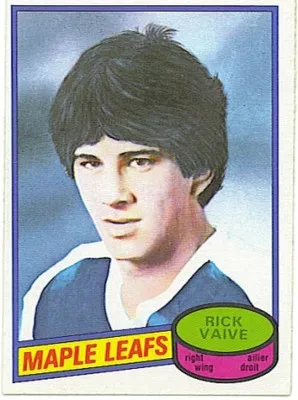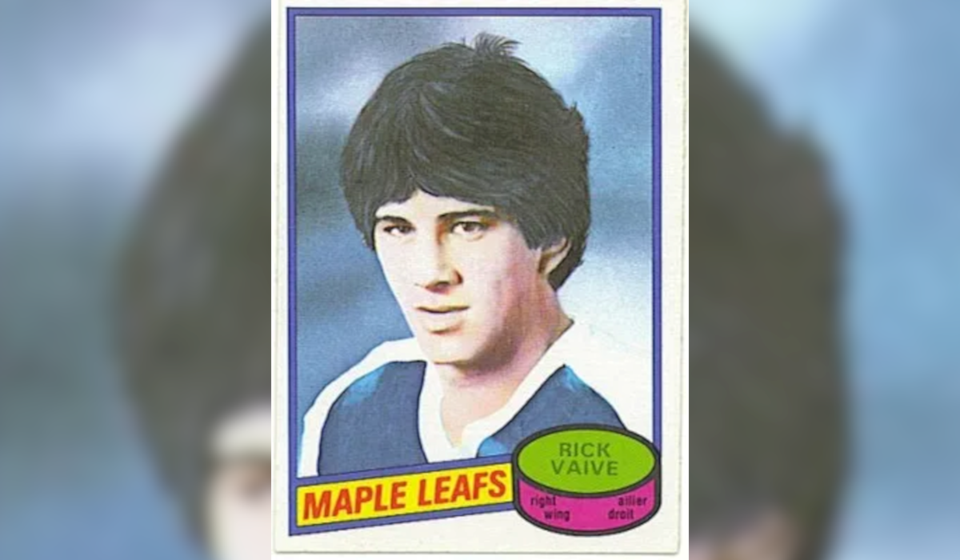What is the worst Vancouver Canucks trade of all time?
Recency bias might point some Canucks fans to the Oliver Ekman-Larsson trade, which will have a deleterious effect on the Canucks’ salary cap through 2031.
Others might point to the Cam Neely trade from 1986, where general manager Jack Gordon sent Neely and a first-round pick to the Boston Bruins for Barry Pederson. Neely turned into a Hall-of-Famer and the first-round pick nearly did as well, while Pederson was a shadow of his former self thanks to shoulder surgeries.
The Neely and Ekman-Larsson trades are certainly bad but there’s one other Canucks trade that deserves consideration: Rick Vaive and Bill Derlago to the Toronto Maple Leafs for Dave “Tiger” Williams and Jerry Butler. The trade not only cost the Canucks two star players, but also led to one of the most bizarre airbrushed hockey cards in NHL history.
The Canucks' best first-round picks of the seventies
The Vaive/Derlago trade frequently gets overlooked in discussions of the worst trade in Canucks history because Tiger quickly became a fan-favourite in Vancouver, with a penchant for punching opponents and scoring goals, which he celebrated with great exuberance.
Two years after the trade, the Canucks were in the Stanley Cup Final, with Tiger playing a key role. He was a burr in the backside of opponents with his chippy, physical game, but also put up 10 points in 17 games, including the overtime gamewinner in Game 2 against the Calgary Flames in the first round.
But that was the Canucks’ only taste at success in that era and they might have achieved more lasting success if they hung on to Vaive and Derlago.
The two forwards were the Canucks’ first-round picks in 1978 and 1979. Derlago was one of the all-time greatest goalscorers in junior hockey, leading the Western Canada Hockey League with 89 goals in just 52 games in his draft year, 1977-78. That season, he reached the 50-goal mark in just 27 games, a junior record.
In Vancouver, however, Derlago was heavily criticized by his head coach, Harry Neale. It didn’t help that a knee injury on a late hit by Denis Potvin ended a promising rookie season and likely contributed to his slow start in the his second season.
Then there was Vaive, who had already proven himself in professional hockey with the NHL’s rival, the WHA. His 59 points in 75 games led the Birmingham Bulls in scoring before the WHA collapsed and he entered the NHL draft as one of the top prospects.
But Vaive had also piled up penalty minutes in his draft year with 248, as the older players in the WHA attempted to intimidate the teenager, who felt the need to give as good as he got in order to protect himself. Accordingly, Neale was expecting a bruising power forward rather than the skilled scorer he got when Vaive arrived in Vancouver.
“I like guys who lead their club in scoring and in penalties,” said Neale to The Province’s Clancy Loranger. “We picked him because we thought we needed a guy capable of stirring things up.”
Vaive and Derlago quickly fell out of favour with Neale and the decision was made to move them for Tiger, who was a better fit for what Neale wanted. While Tiger scored 35 goals in his first season with the Canucks, his subsequent seasons underwhelmed in comparison to Vaive and Derlago in Toronto.
"That is one [trade] I wouldn't make again."
Vaive scored 33 goals in his first season with the Leafs, then, in the 1981-82 season, he erupted for 54 goals. It was the first 50-goal season in Maple Leafs history and it stood as a franchise record for 40 years until Auston Matthews scored 60 goals in the 2021-22 season.
Named the captain of the Maple Leafs, Vaive went on to score 50+ goals in two more seasons and scored at least 30 goals in nine seasons. Vaive’s 441 career goals is still the most ever by a Canucks draft pick — four more goals than Pavel Bure.
Derlago’s career wasn’t too shabby either. As Vaive’s centre in Toronto, he hit a career-high 84 points in 75 games in the 1981-82 season and had a 40-goal season in 1983-84. He finished his career with 416 points in 555 games, 19th all-time among Canucks draft picks.
It’s hard not to wonder what might have been in 1982 if the Canucks didn’t trade Derlago and Vaive. They would have been first and third on the Canucks in regular season scoring, with Vaive leading in goals by a country mile. Maybe they not only still make the playoffs and go on a playoff run but also give the dynastic New York Islanders more of a run for their money with Derlago and Vaive alongside Thomas Gradin, Stan Smyl, and Curt Fraser.
Even the general manager that made the trade, Jake Milford, came to regret it.
“That is one [trade] I wouldn’t make again,” said Milford to The Province’s Tony Gallagher at one point. “It took me a week to make it and I wanted to trade [Jere] Gillis and Derlago, not Vaive. Derlago was never going to play for Harry [Neale], so that didn’t bother me, but Vaive has come on and matured. We got the better of the deal for the first year and a half, with the way Tiger played, but Vaive would look good here now.”
At the very least, the hockey world would have been spared an utterly bizarre airbrushing job.
An airbrushed salad
In the days before digital photo editing tools like Photoshop, photo alterations had to be done by hand. Talented artists spent long hour painstakingly using an airbrush to cover up blemishes or carefully cover up elements of a photo that a customer wanted to remove. They were capable of beautiful, photorealistic results.
Or, in the case of the hockey card industry, the airbrushing efforts were significantly more rushed and slipshod. Hockey cards were for kids, after all, and could be purchased for pennies a pack at the time, so artists didn’t have a lot of time to produce beautiful results.
Why was airbrushing necessary at all? When a player got traded to a new team, it was more cost-effective to just paint over a photo of the player in his previous jersey than it was to send a photographer to take a new photo. Artists would paint over the player’s previous jersey and sometimes their helmet, gloves, and other equipment as well, with mixed results.
None of that explains what O-Pee-Chee did to Rick Vaive after he was traded to the Leafs.

The airbrushing on the jersey itself is serviceable. It looks painted, sure, but it’s not eye-catchingly bad. What is bizarre is that the artist didn’t stop at the jersey but also felt the need to airbrush his hair.
“The first time I saw it, I was shocked.”
While Vaive’s jersey changed when he went from the Canucks to the Leafs, his hair didn’t. Painting in an entirely new hairstyle makes this one of the most bizarre hockey cards ever released.
“The first time I saw it, I was shocked. It was kind of weird looking,” said Vaive to Sportsnet’s Ken Reid about the card. “I think they did a pretty decent job making it look like me, but it was just weird.”
“You think they would have put a helmet on me or something, I don’t know,” Vaive added. “The first time I saw it, I went, ‘What the hell is this?’”
My guess is that the original photo featured some prominent fans in Canucks jerseys in the background. The airbrush job likely started with just covering up those fans with a blurry blue and white background to make it look like he was in Toronto.
But that background likely interacted with Vaive’s hair in a distracting way or maybe it was too hard to airbrush the background without affecting his hair. So, the artist just kept going.
“You know how when you're a kid and you start to draw and you just keep going?” said Reid, an avid card collector. “I think the artists just kind of took their poetic license a little too far. Like well, ‘I could touch his hair up. It's real nice hair, if I could just put a glitter of shine on it.’”
Now that airbrushed card stands as a monument to a bad trade and what could have been if the Canucks just hung on to Vaive a little bit longer.




